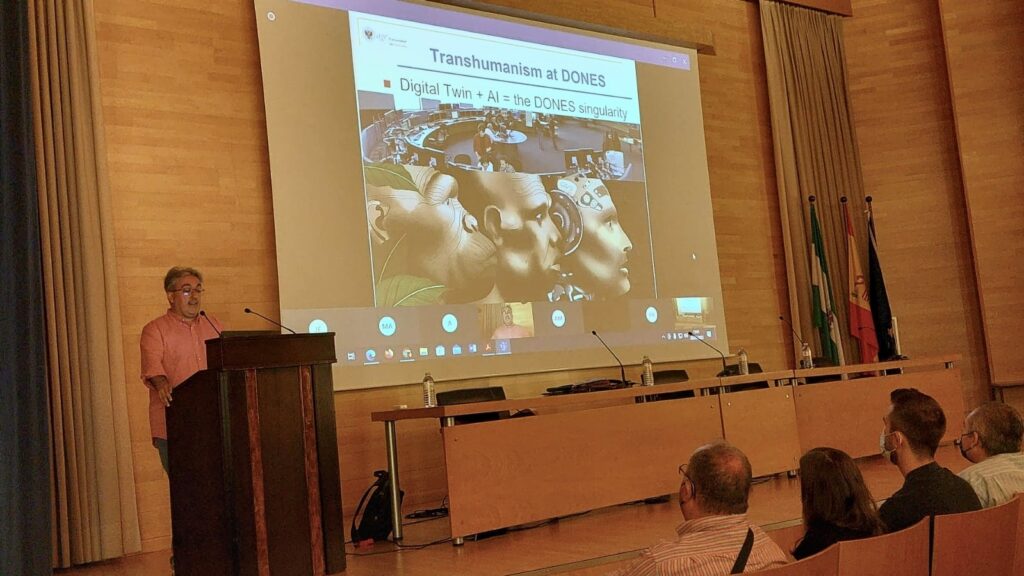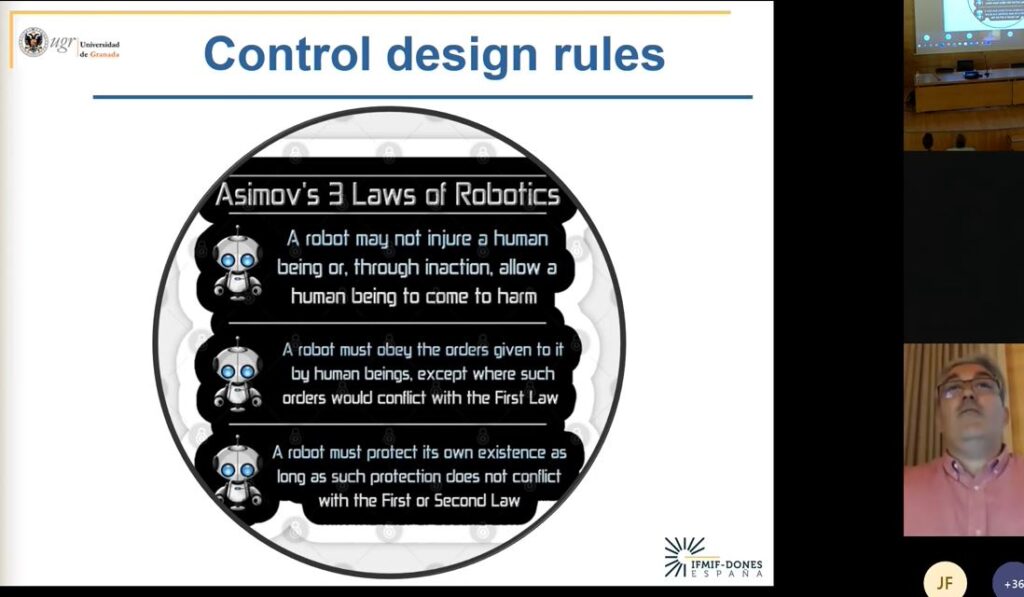DONES Meeting #04, an approach to the possibilities of the Digital Twin of IFMIF-DONES

The School of Building Engineering has hosted the DONES Meeting #04, which has focused this time on the control systems of the IFMIF-DONES facility, and the possibility of incorporating a digital twin that integrates both the model of the facility and the physics that takes place within it. Once again, the seminar could be followed both in person and virtually, and at the end of the presentation there was an interesting and participative round table for discussion.
The first part of the seminar was led by Javier Díaz, Profesor Catedrático de Universidad (Professor) at the Department of Computer Architecture and Technology, and head of the Laboratory for the Development of Control Systems for LIPAc/DONES at the University of Granada. During his presentation, Díaz explained in detail the work and functions of the team involved in instrumentation and control at IFMIF-DONES, leaving room for “dreaming a little and seeing how things could be done in the future”.
The architecture of the physical devices and the safety of the facility involves the use of many different technologies such as software, Artificial Intelligence, computer technology among others. The team working on these aspects has set itself several goals, with a particular focus on energy optimisation.
Both the particle accelerator and the rest of the elements of the facility pose a great challenge when it comes to customising a control system and the different problems that can arise. Díaz referred to Asimov’s laws of robotics, showing their validity and connection with the criteria that must be considered when designing the machine.

“DONES twin”, a colossal task
The possibility of integrating a digital twin into the facility starts from considering it as an abstraction, a concept that envisages a new way of understanding and operating IFMIF-DONES control systems. According to Díaz “A plant that is designed today has to contemplate any update to be made in the next 30 years.”
The question is whether it will be possible to get a flawless model that simulates the plant. For a simulator to predict the behaviour of a plant, it must have the ability to receive physical signals from the plant via a cell with the samples to be irradiated, through which to receive the signals from the plant physically. Thus, the digital twin would be integrated in a way that would allow data analysis.
In the words of the head of control systems development at IFMIF-DONES: “We can use the digital twin concept to have design approaches, it can be used in the preliminary phases and with it we can try to emulate the plant to understand how it is operated and managed”. Knowing the machine would help enormously in detecting problems and issues in any of the elements early so that we can operate on them before the problem develops, using emulators of the control systems.
After Díaz’s talk, the round table a round table “The possibilities of the IFMIF-DONES Digital Twin” took place, with the participation of Juan Chiachio, Iván Podadera and Juan Gómez. This space enabled dialogue and a sharing of ideas and possibilities around the idea of integrating a digital twin in the facility.
This session is part of a series of monthly meetings launched by IFMIF-DONES España under the name DONES Meetings. They are held on a monthly basis, both in person and online, and are aimed at facilitating greater cohesion between the teams working for the development of fusion energy. DONES Meeting #05 will take place on June 24, and will address the call for miniature test tubes, degradation in irradiated steels, fusion materials and material modelling techniques.
Watch the full video of the DONES Meeting #04 below:

